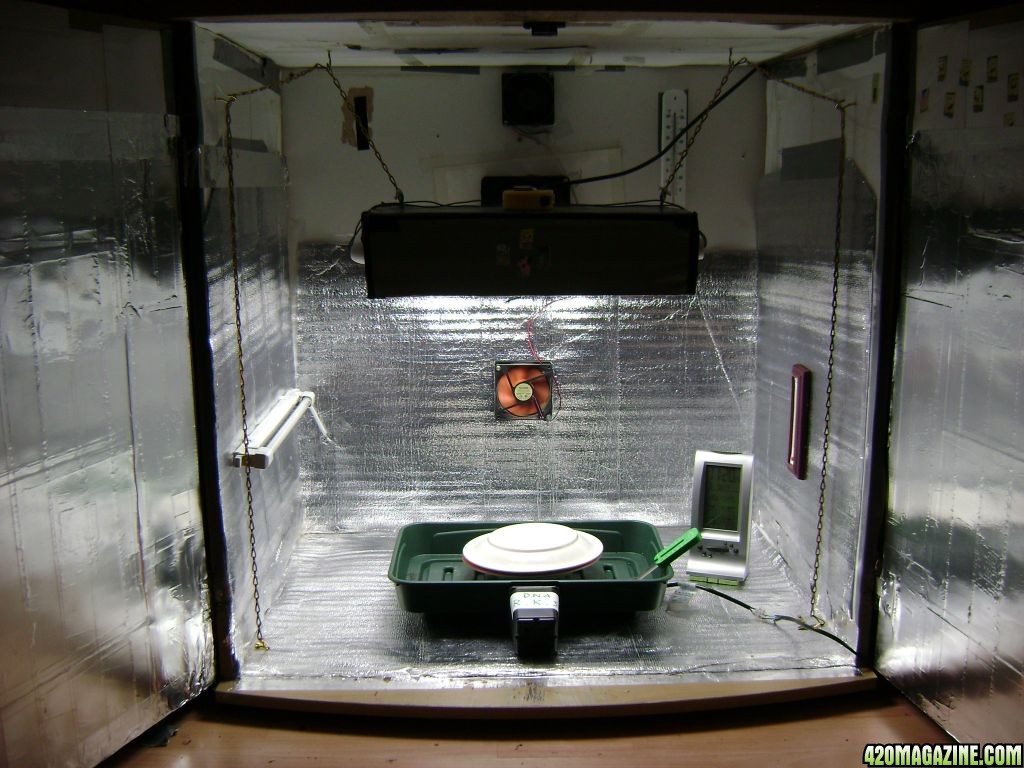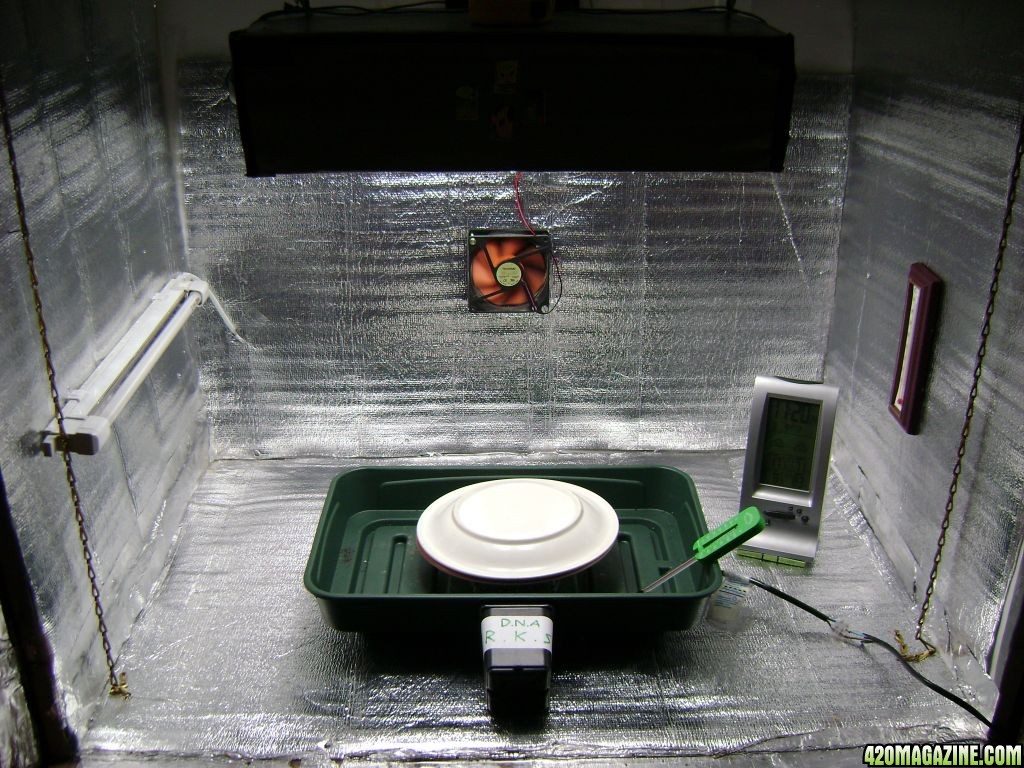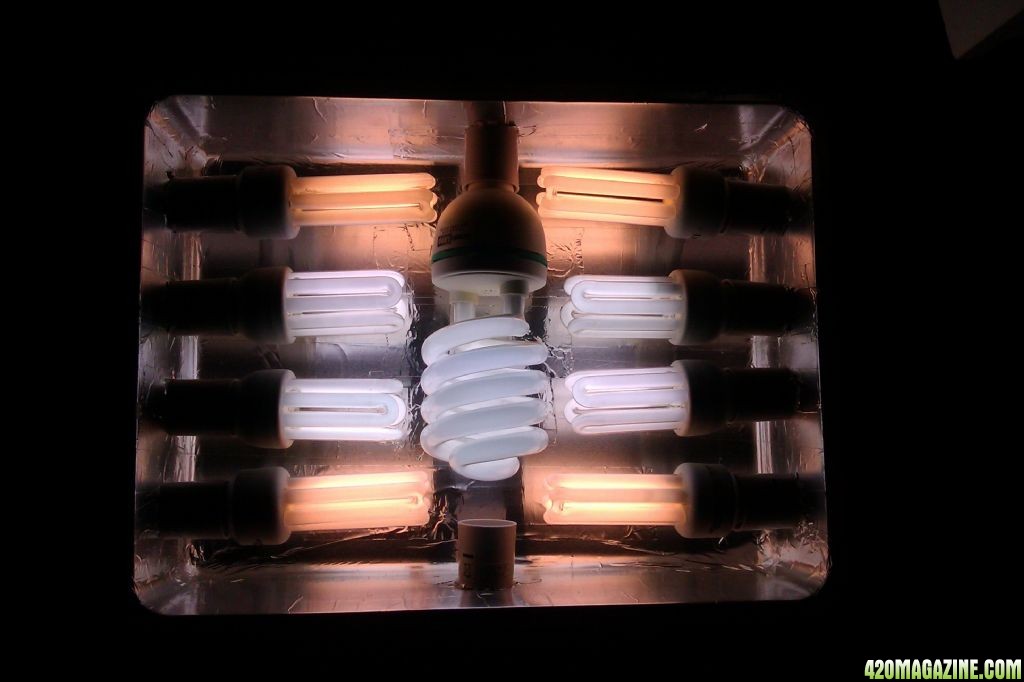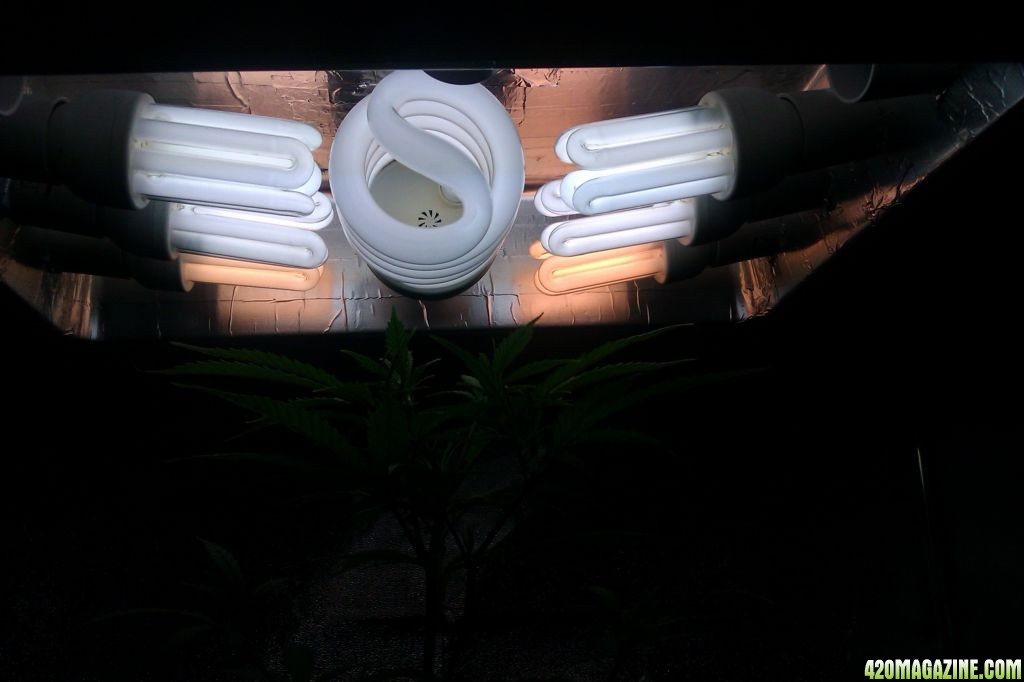DubVitals
New Member
Hello all fellow 420ers.
Welcome to my grow, this is going to be a budget grow for me as funds are low atm and will be goin back to my original CFL grow box, i have been growing for over a year now with 400w HPS/MH in a DR120 Grow tent, but for now this will be a back to basics for me and i miss the whole growing scene only been out of it for about 4 months is that bad ???
???
Anyway enuff of me waffling on and boaring you guys, lets get some details going.
Strain : DNA Genetics R (Really) K (Killer) S (Skunk) FREEBIE SEED.
Compost or hydro? : Good Old Multipurpose Compost With Added J.I (adding 40% Perlite)
Nutrients : Bio Bizz Grow/Bloom
Method Of Grow : Lst/Scrog Mayb?
Lighting : CFL Start To Finish (diy hoods)
Ventilation : PC Fans
I will only be growing one plant and hope to lst it to get even light on the canopy as using cfls.
Pictures Of My Setup and lights are below,






The seed is in a moist paper right now as of about 7pm tonight.
will update in the next couple of days please comment if you have any suggestions or idea or anything i will always reply


Welcome to my grow, this is going to be a budget grow for me as funds are low atm and will be goin back to my original CFL grow box, i have been growing for over a year now with 400w HPS/MH in a DR120 Grow tent, but for now this will be a back to basics for me and i miss the whole growing scene only been out of it for about 4 months is that bad
 ???
??? Anyway enuff of me waffling on and boaring you guys, lets get some details going.
Strain : DNA Genetics R (Really) K (Killer) S (Skunk) FREEBIE SEED.
Compost or hydro? : Good Old Multipurpose Compost With Added J.I (adding 40% Perlite)
Nutrients : Bio Bizz Grow/Bloom
Method Of Grow : Lst/Scrog Mayb?
Lighting : CFL Start To Finish (diy hoods)
Ventilation : PC Fans
I will only be growing one plant and hope to lst it to get even light on the canopy as using cfls.
Pictures Of My Setup and lights are below,


The seed is in a moist paper right now as of about 7pm tonight.
will update in the next couple of days please comment if you have any suggestions or idea or anything i will always reply








